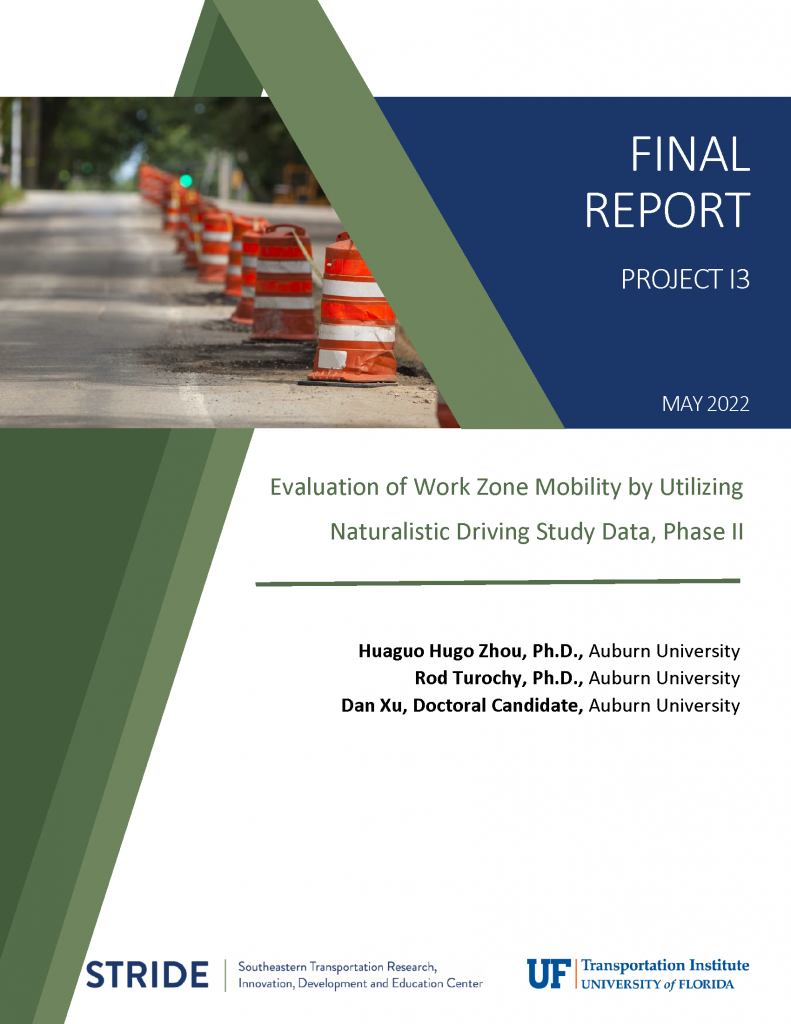Evaluation of Work Zone Mobility by Utilizing Naturalistic Driving Study Data, Phase II
Research Team
Huaguo Hugo Zhou, Ph.D., Auburn University
Rod Turochy, Ph.D., Auburn University
Dan Xu, Doctoral Candidate, Auburn University
The objective of this research was to study work zone mobility by utilizing the second Strategic Highway Research Program (SHRP2) Naturalistic Driving Study (NDS) data. The NDS data provides a unique opportunity to study car-following behaviors for different driver types in various work zone configurations, which cannot be achieved through traditional field data collection. The complete NDS work zone trip data of 200 traversals by 103 individuals, including time-series data, forward-view videos, radar data, and driver characteristics, was collected at four work zone configurations (two-to-one and three-to-two lane closure, and two-to-two and three-to-three shoulder closure), which encompasses nearly 1,100 vehicle miles traveled (VMT), 19 vehicle hours traveled (VHT), and over 675,000 data points at 0.1-s intervals. First, the gap and headway were analyzed for different drivers (gender, age group, and risk perceptions) to develop the gap and headway selection tables. Furthermore, the speed profiles for different work zone configurations were established to explore the speed change through the entire work zones. The generalized additive model (GAM) was used to develop the best-fit curves of time headway and speed distributions. The change point detection method was used to identify where significant changes in mean and variance of speeds occur. The research results provided additional information on potential impact of human factors on car-following models at work zones that have been implemented in current work zone planning and simulation tools. Additionally, the findings of this work can also be helpful to the automotive industry to improve Adaptive Cruise Control (ACC) gap spacing setting at work zones.
